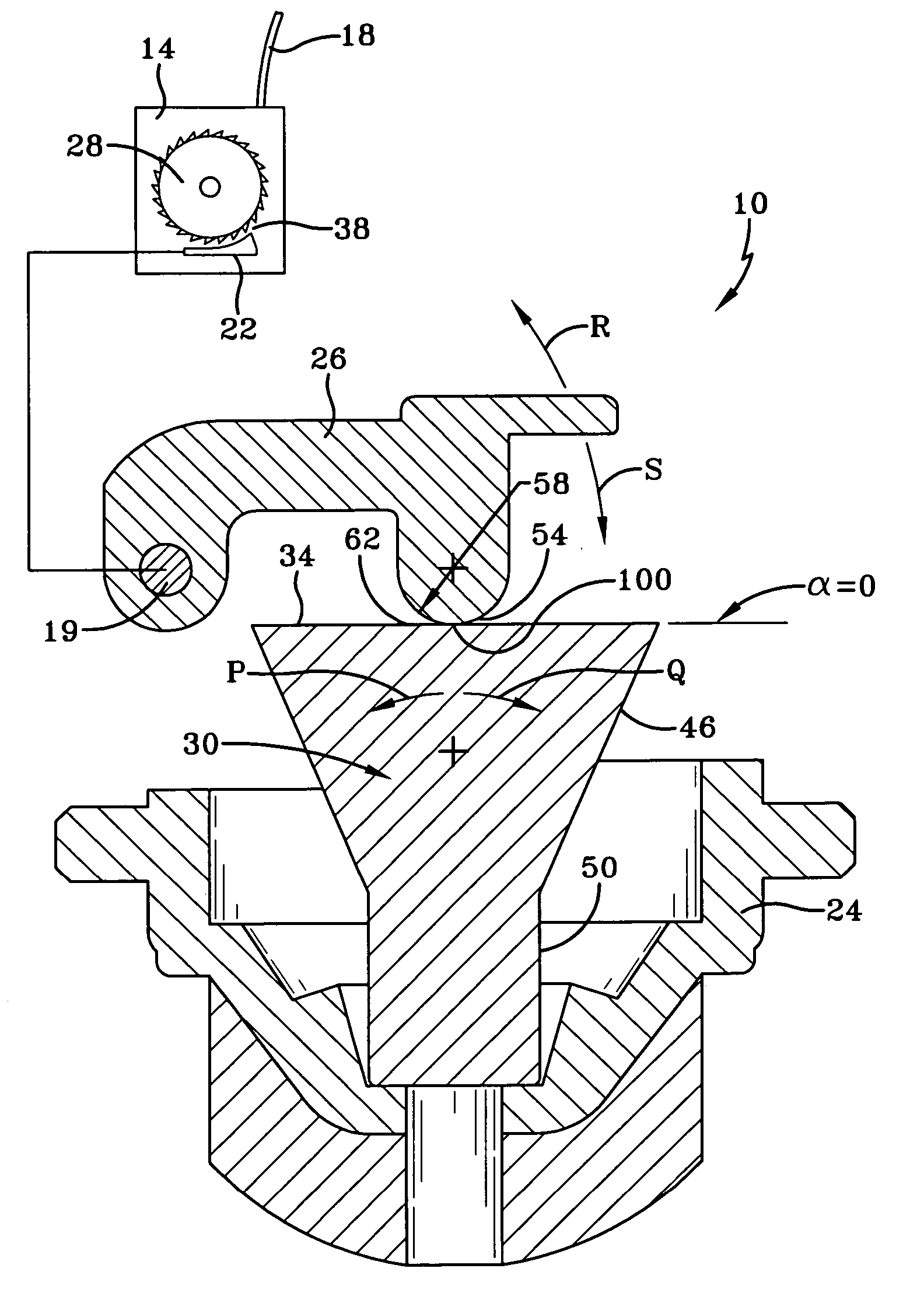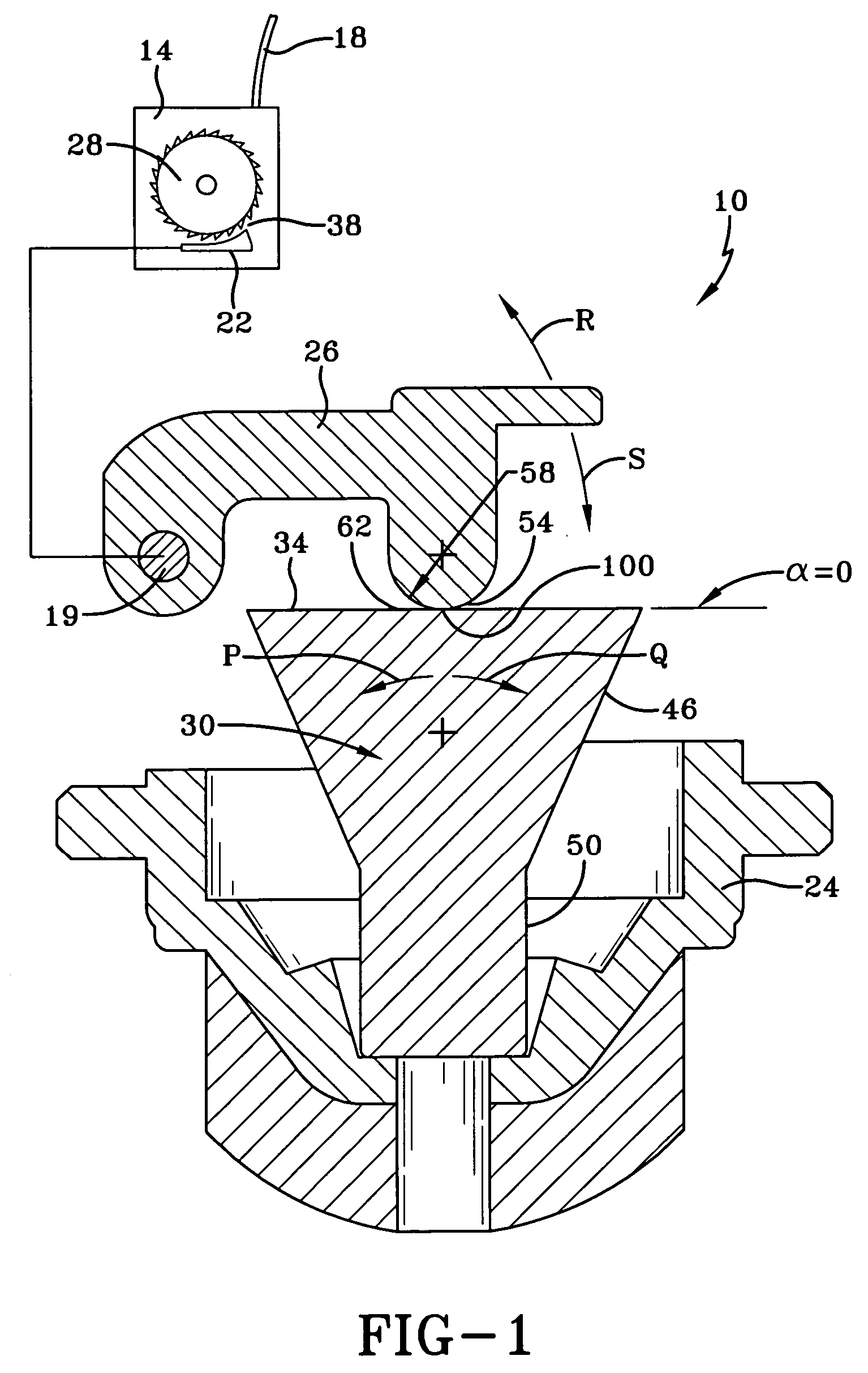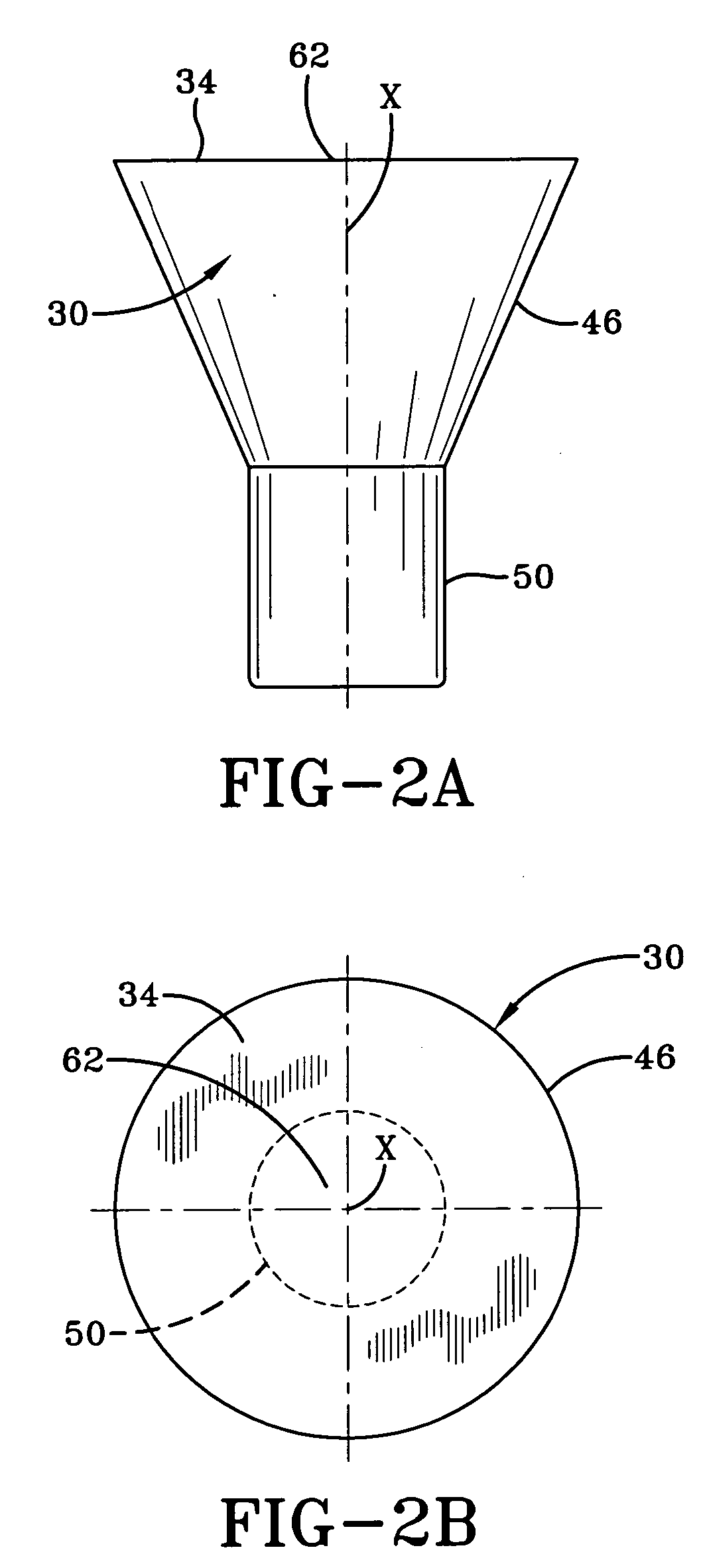Seatbelt retractor having an inertial sensor weight with a guide surface
- Summary
- Abstract
- Description
- Claims
- Application Information
AI Technical Summary
Benefits of technology
Problems solved by technology
Method used
Image
Examples
Embodiment Construction
[0027]FIG. 1 is a side view of an inventive seatbelt retractor assembly 10. The seatbelt retractor assembly 10 has a seatbelt retractor 14, which houses a seatbelt 18 as shown. Like conventional seatbelt retractors, the seatbelt retractor assembly 10 has a locking pawl 22, which is selectively engageable with a locking wheel 28. The locking wheel 28 has teeth to engage the locking pawl 22. When the locking pawl 22 is engaged with the locking wheel 22, the seatbelt retractor 14 prevents the seatbelt 18 from extending further from seatbelt retractor 14.
[0028] As shown, the seatbelt retractor 14 has an inertial sensor, here an inertial sensor mass 30, which is responsive to vehicle acceleration. The inertial sensor mass 30 rests on a sensor housing 24, here shown schematically, and tips in the direction of either arrow R or arrow S in response to vehicle acceleration. The inertial sensor mass 30 is linked to the locking pawl 22 by an actuator 26, an arm, which causes the locking pawl ...
PUM
 Login to View More
Login to View More Abstract
Description
Claims
Application Information
 Login to View More
Login to View More - R&D
- Intellectual Property
- Life Sciences
- Materials
- Tech Scout
- Unparalleled Data Quality
- Higher Quality Content
- 60% Fewer Hallucinations
Browse by: Latest US Patents, China's latest patents, Technical Efficacy Thesaurus, Application Domain, Technology Topic, Popular Technical Reports.
© 2025 PatSnap. All rights reserved.Legal|Privacy policy|Modern Slavery Act Transparency Statement|Sitemap|About US| Contact US: help@patsnap.com



